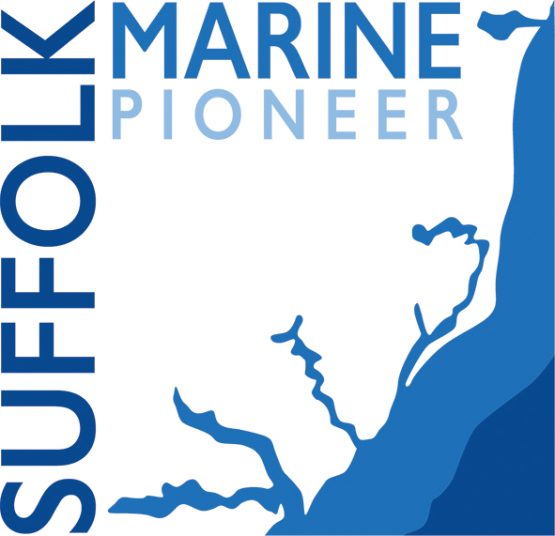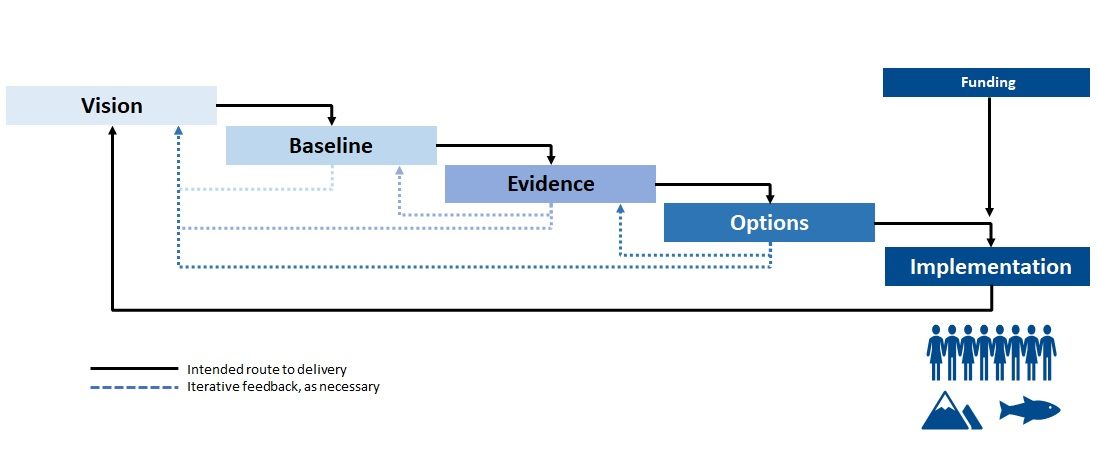Suffolk Marine Pioneer

We get lots of benefits from the natural environment, but don’t pay directly for them. This means we often take our environment for granted and harm it.
Continuing this damage risks the functionality of natural systems and losing the benefits they offer. The 'natural capital approach' aims to change the way we think about the environment by attributing value to it in decision making.
The Marine Pioneer was established to test the natural capital approach for marine & coastal environments to inform the Government's 25 Year Environment Plan.
How will change occur?
The recommendations from the collated marine pioneer are available online.
Defra's 25 Year Environment Plan commits to environmental improvement. A natural capital approach could help deliver this ambition.To test this theory five 'Pioneer' projects, including Suffolk Marine were set up.
What is the natural capital approach?
The Natural Capital Approach (PDF) changes the way we think about the environment. It promotes the value of nature by demonstrating it's importance in our everyday lives. We captured what nature's value means to the people of East Anglia with a photography competition. Find out more about the Nature's Value Photography Competition.
Understanding the value of nature only means something if it is set in the context of place-based decision making. The aim is to make better, more sustainable decisions to improve the environment in one place. The natural capital approach is a process to deliver this.
Natural capital looks at the environment from a human perspective, asking the question 'What does nature do for us?' The 'Natural Capital Approach' was proposed as a mechanism that could prevent damaging behaviour and therefore support environmental recovery by ensuring we recognise the value of the environment in our decision making.
The illustration outlines the 5 key steps to deliver a Natural Capital Approach. If you are considering using a natural capital approach please look through this webpage to learn about the Pioneer's attempt to test natural capital in a local context and click on the links for more detail from around the country.

What can it deliver?
It is important to be clear what you hope to achieve when employing a natural capital approach. To do this, it is wise to set a vision.
The vision should be more than just a collection of words. A good vision will engage, inspire and involve stakeholders to support the development and implementation of a natural capital plan. It is likely that different groups will have different priorities, so it is important to draw people together to develop a collective vision that can support all.
The Marine Pioneer tested a natural capital approach for estuarine saltmarshes. The Pioneer's approach to visioning and comments on some of the challenges are outlined in the Final Report and summarised in a Quick Read Summary Briefing.
Where do you start from?
Once you have established your vision, you need to know your starting position and goals.
Start by developing a baseline, consisting of basic information concerning the extent, condition and location of an area's natural capital. A good baseline will also include details of current and planned environmental management. Gathering this information should provide the basis for analysing how to move forward.
It is at this stage where having some technical knowledge of ecosystem services becomes useful. It may be possible to build a baseline from information that is already publicly available, however it was the experience of the Suffolk Marine Pioneer that a truly informative natural capital baseline requires a significant amount of work, particularly in terms of understanding the condition of the natural environment. Gaps in the baseline will need to be filled by commissioning evidence.
The Suffolk Marine Pioneer's experience of developing a baseline is documented in the Final Report.
What information is needed?
With an understanding of the vision and the current state of affairs, the next step is to establish possible routes to reach the identified goals. Building a natural capital evidence base will help do this. A natural capital evidence base will likely consist of;
- An asset register that details the different components and benefits of the natural environment
- A risk register to inform planning, priorities and opportunity for delivery
Many different components of evidence are needed to build an asset and risk register. As far as possible, this should be quantitative evidence considered at a level relevant to decisions the asset register seeks to influence. Some components underpinning the Pioneer's evidence base are available to download in the links below.
Neither the asset nor risk register need to be comprehensive to allow progress, but the more detail they contain, the more confident decision making can be. When seeking to understand the environment at a local level, compiling an asset register can be a real challenge, especially around the question of 'value'.
The Pioneer found a participatory approach to engage and involve stakeholders in the evidence gathering process helpful, a guide for delivering this approach has been produced by Burdon et al. (2020) (PDF).
Information held in the asset register will be expressed in a variety of different units. This poses a problem for decision makers. The natural capital approach identifies the development of natural capital accounts to address environmental degradation by expressing the values of natural assets in comparable terms that are likely to be monetary. The UK government have begun to trial natural capital accounting for certain environments.
- Deben Estuary Salt Marsh Status - Slee et al 2018 (PDF)
- Wave Protection Provided By Salt Marshes - Rogers and Möller (PDF)
- Valuation Of Carbon Storage, Sequestration and Sea Bass Production in the Deben Estuary (PDF)
- Participatory Mapping Policy Briefing - Brief 2020 (PDF)
Successful delivery of the vision requires integrated working across multiple partners and pooling of resource. This may prove difficult because the environment crosses political and geographic boundaries. Because success requires people working collaboratively together, an inherent risk of failure exists from disagreements and incompatible working practices.
It is critical that there is a clear governance structure in place from the beginning as well as a plan to finance the delivery of the goals. The Pioneer explored this throughout the project's duration and now the lessons of this are being applied to natural capital approaches across the region.
Supported by Defra and the Suffolk Coast & Heaths Area of Outstanding Natural Beauty Sustainable Development Fund.

